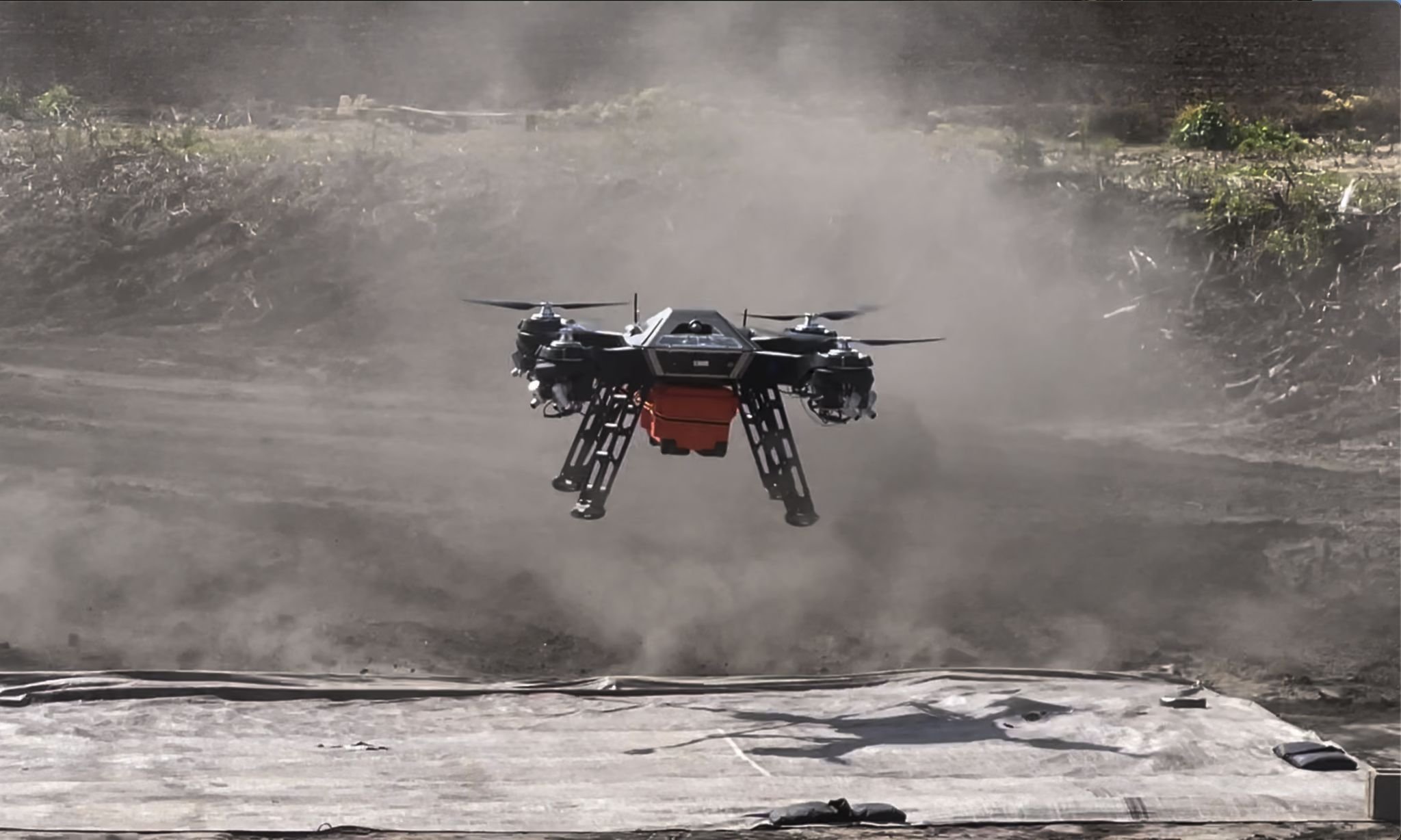Island Conservation and Parallel Flight Technologies Partner
The groundbreaking hybrid drone aircraft is expected to greatly advance island restoration for wildlife, oceans and people in places never before possible.
Island Conservation, a leading global nonprofit organization that restores and protects island-ocean ecosystems by removing destructive invasive species, has announced a strategic partnership with Parallel Flight Technologies, a California-based company specializing in heavy-lift drone and hybrid propulsion technology.
This partnership is expected to advance Island Conservation’s critical island restoration initiatives to new heights.
Islands are biodiversity hotspots that are home to an incredible range of birds and terrestrial animals, as well as abundant marine life in the surrounding ocean. However, they are also vulnerable to destructive invasive species, such as rodents that destroy natural habitat. Roughly 75 percent of reptile, bird, amphibian, and mammal extinctions combined have occurred on islands with invasive species as a primary cause. Removing this threat is crucial to ensuring ecological balance and diversity.
“Frequently, conducting invasive species eradications in order to protect these ecosystems involves huge logistical and resource challenges,” says David Will, Head of Innovation at Island Conservation. “Because of this, we have pioneered the use of drones in invasive rodent eradications to overcome the cost and skill barriers to conventional ground and helicopter-based approaches. However, we’ve reached the limits of what current all-electric drone technology can achieve.”
The solution lies in hybrid unmanned aircraft systems (UAS) with large payload capacities and long-range capabilities that can meet the demands of conservation interventions in remote locations. Parallel Flight Technologies offers a groundbreaking aircraft with hybrid propulsion technology that gives it a combination of lift, endurance and portability which are ideal to advance Island Conservation’s field efforts.
“We see this technology as a game-changer, and we believe that it will allow us to achieve our goal to restore globally important islands more efficiently, effectively and sustainably,” says Will.
The aircraft can carry and spread a total payload capacity of approximately 100 pounds (45 kilograms) for over 1.6 hours of flight time and can autonomously fly pre-programmed flight paths while accurately delivering bait at prescribed application rates. The hybrid propulsion technology is highly efficient and relies on locally sourced fuels, eliminating the need for costly, wasteful batteries. It also dramatically reduces the carbon footprint and power requirements of continuous aerial operations in remote locations.
“Our work with Parallel Flight Technologies is timely, inspiring and necessary,” says Penny Becker, Vice President of Conservation at Island Conservation. “The continued development and adaptation of Parallel Flight Technologies’ autonomous heavy-lift drone technology will enable a significant increase in safety parameters and exponentially increase efficiency over traditional methods. With this drone technology, we will be able to restore islands on a much larger scale and in remote places that were once prohibitive, protecting more island wildlife, oceans and communities.”
Islands are biodiversity hotspots. Restoring islands is repeatedly proven to be one of the best interventions for protecting biodiversity and creating resilient, thriving ecosystems. Photo: Island Conservation.
Making heavy-lift drone technology more readily available in the future will support island communities that rely on sustainable natural resources for food security and their livelihoods. When biodiversity is diminished, fishing and other income-driving activities are reduced, and tourism can be negatively affected. Island communities are also on the frontlines of climate change, susceptible to rising sea levels, flooding and other climate-related impacts.
“We are extremely pleased to be deploying our heavy-lift drone platform to support these island communities,” says Joshua Resnick, CEO of Parallel Flight Technologies. “Welcoming Island Conservation, an extremely reputable and respected organization, as a partner is a multi-fold value add for Parallel Flight. This synergistic partnership will provide us access to directly impact global biodiversity initiatives by replacing helicopters and implementing our scalable technology for use across remote islands around the world. These types of use cases are a part of our DNA, and we are thrilled that this partnership will allow us to further act on our mission to save lives and protect the environment for future generations.”
BACKGROUND:
Island Conservation
Island Conservation is our world’s only international nonprofit conservation organization dedicated solely to preventing extinctions on islands. Our collaborations with local island communities aim to improve livelihoods, manage invasive species, and reintroduce native animals and plant life. Island Conservation is a United States-based 501(c)(3) charitable organization working through diverse local and international partnerships to foster sustainable development, climate resilience, and healthy island-marine ecosystems across the globe. Visit us at www.islandconservation.org.
Parallel Flight Technologies
Parallel Flight Technologies is pioneering intelligent hover and vertical-lift with sustainable, autonomous UAV solutions to save lives, property, and the environment. The company’s transformative Parallel hybrid propulsion technology allows UAV platforms to carry heavy payloads for long durations, and can be applied across multiple logistics verticals, including real-time and complex healthcare logistics, tactical support for firefighters and first responders, industrial logistics and other mission-critical applications, globally. This tech enables >90% carbon footprint reduction, and 50%-75% reduction of operating costs. Visit www. parallelflight.com for more information.


